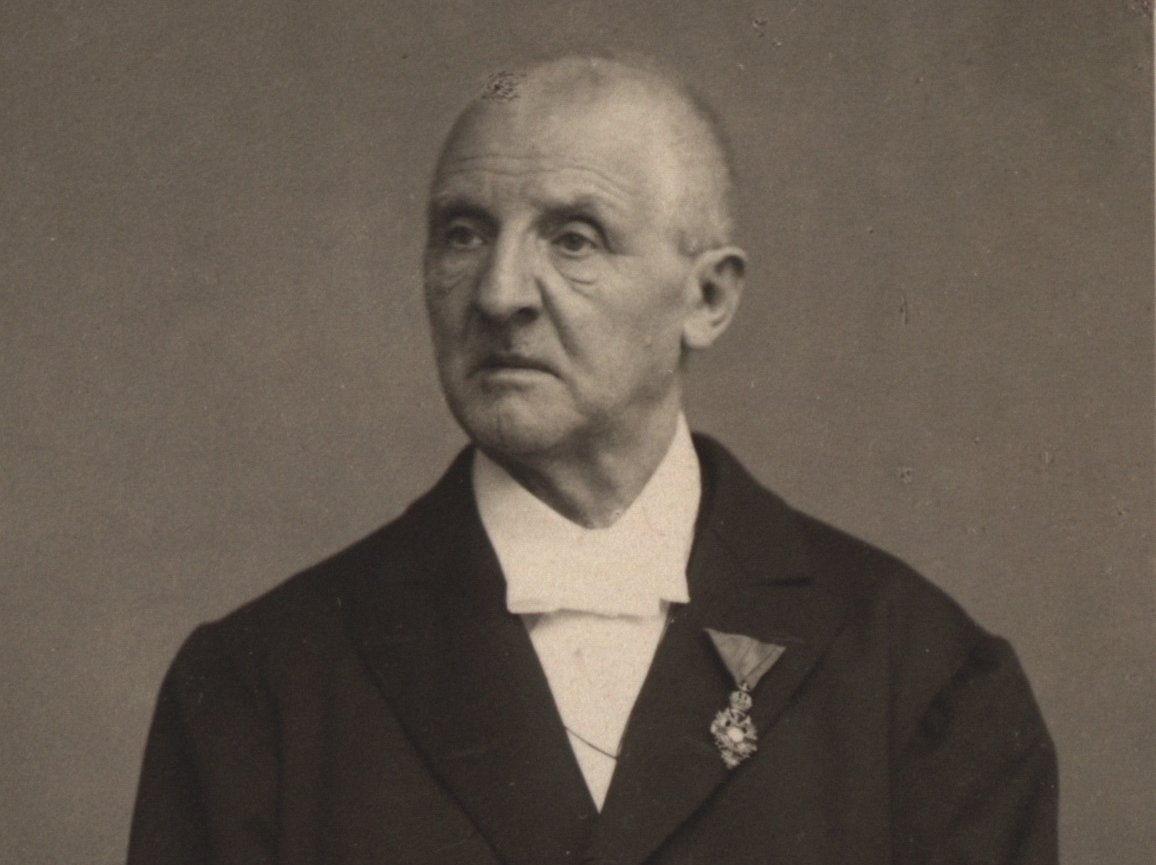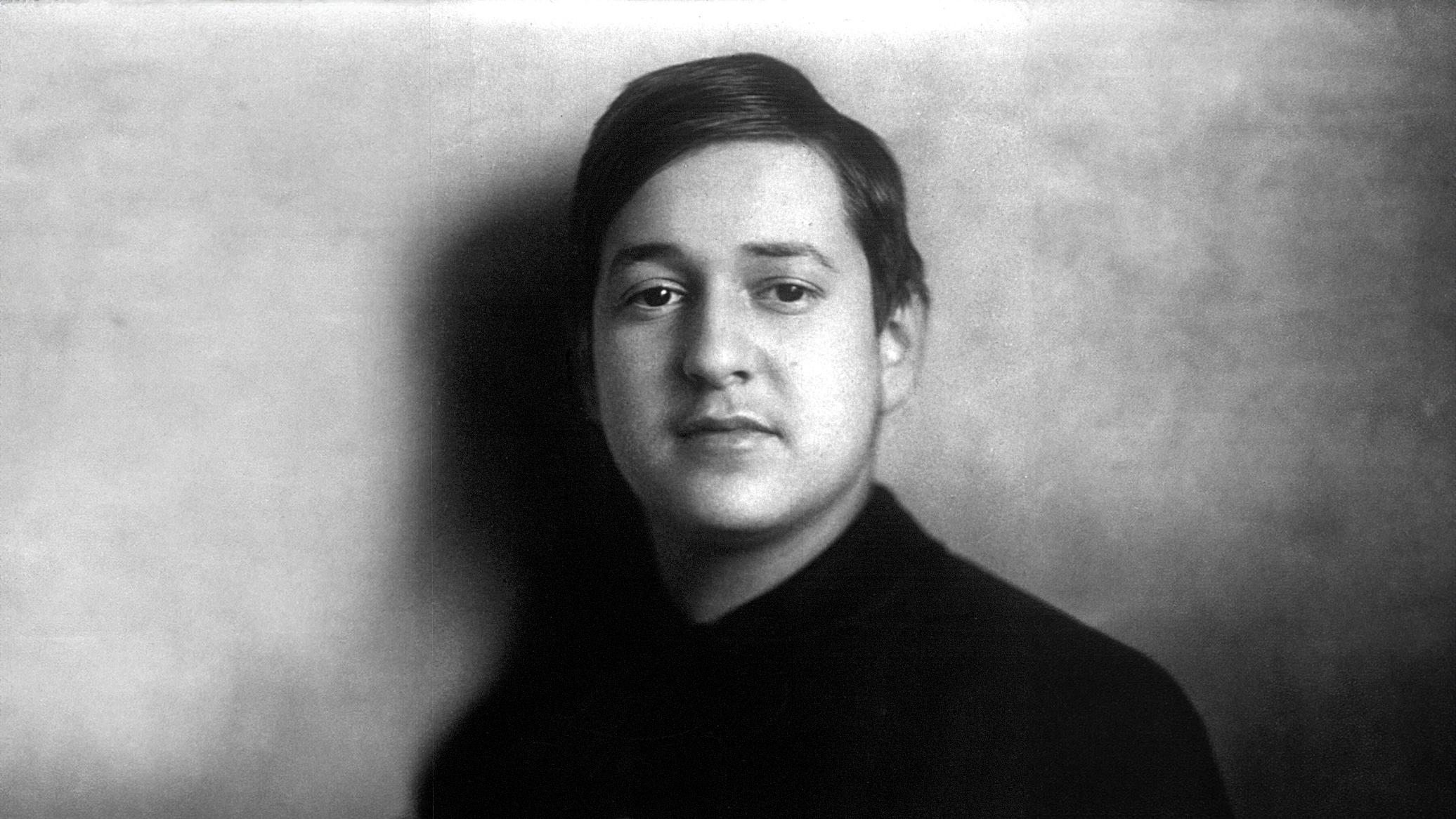- Portrait
- Philharmonic Moments

The Danish composer Rued Langgaard was an eccentric who for the most part found himself at odds with his fellow human beings. The Berliner Philharmoniker gave the world premiere of his First Symphony on 10 April 1913. It was a Philharmonic moment. This work urgently needs rediscovering.
Contemporary observers, including the composer himself, agreed that his concert in Berlin on 10 April 1913 constituted the high point of his career. Unfortunately, it also marked the end of that career. Although Langgaard was then only nineteen, the next forty years were overshadowed by a long series of failures and disappointments. He was one of the most original figures on the musical scene in Europe at that time, and yet he remained an outsider all his life, at best a figure of fun and at worst one who was merely the subject of rumours.
In Denmark it was only after 1968 that word of his existence got out after Per Nørgård raised his predecessor’s profile by smuggling one of his works, Sfærernes musik, into a competition for composers. The eminent members of the jury declared that the piece – submitted anonymously – was evidently the work of an interesting follower of Ligeti, whose Atmosphères of 1961 was then being hailed as a pioneering composition. Nørgård then revealed his hand: the work, he admitted, dated from 1916, prompting Ligeti himself to observe: “Gentlemen! I’ve just discovered that I’m a follower of Langgaard!”
Langgaard himself would no doubt have been astonished at this discovery since he held the view that it would take two thousand years before anyone understood his music. But no, recognition came much more quickly. Several of his sixteen symphonies – many of them unperformed – were broadcast on the radio, a number of recordings of his orchestral works were released, and his opera Antikrist was staged for the first time eighty years after it had been written. An initial biography also appeared in print.
A genius on the sidelines
Why was Langgaard so unsuccessful during his own lifetime (1893–1952)? His arch-Romantic vein was hardly an obstacle to his success, since audiences in an easy-going country such as Denmark basically liked everything that sounded at all familiar. Langgaard had led a sheltered life, growing up in the solidly middle-class district of Gammelholm in Copenhagen, a child prodigy who fitted perfectly into this environment. He was phenomenally gifted: even towards the end of his life he could still play Schumann’s G minor Sonata from memory because he had once heard his mother perform it while he was a child – he had never set eyes on a copy of the score. His mother ran a number of local choirs and told everyone that her son was a genius, whether they wanted to hear it or not. His father wrote a piano concerto that was never performed and books that were never published. Their titles included “On the Euphony of the Arts with the Harmony of the World”.
Langgaard soaked up the Christian, spiritual atmosphere of his parental home, an atmosphere that he continued to cultivate right up to the end of his life. And he lived the life of a recluse in a bay off the west coast of Jutland, where the frustrated outsider held a post as an organist. He had never attended a state school but had been privately educated at home, while his university studies were so limited that it would be fair to describe him as self-taught. His elitist upbringing and his total concentration on music meant that he lived the life of a loner, fostering an air of otherworldly exclusivity and damning his worldly contemporaries.
It is said that even as a young man he ignored the applause that he received for his few public performances on the piano and merely turned his back on his audience. Later his deviant behaviour was taken to absurd extremes. He never shied away from insulting others and his views of his fellow composers were invariably immoderately strident: Beethoven, he said, sounded like a cow at the piano, Brahms stank of beer and cigars and Nielsen was unmitigated rubbish.
His elder by twenty-eight years, Nielsen was regarded as his country’s national composer, but, nothing daunted, Langgaard singled him out for his particular obloquy. In 1948 he felt called upon to write a piece titled Carl Nielsen, Our Great Composer, thirty-two bars of insults scored for organ and choir which according to the manuscript were to be repeated “for all eternity”. Three years earlier he had composed a Free Piano Sonata whose formal structure and duration are left to the pianist’s discretion.
Other, much earlier works likewise anticipate Cage and others, notably a piano suite titled Insektarium dating from 1917 and requiring the pianist to play directly on the strings. And we often encounter the sort of minimalistic structures that were not popularized until much later by composers like Steve Reich and Philip Glass. But the combination of these innovative devises with a highly charged, late Romantic expressive language was something that members of the avant-garde refused to accept, not that Langgaard attached any importance to the views of such composers. “Modern music is a plague,” he insisted, determined to have nothing whatever to do with it.
The premiere in Berlin
In Langgaard’s First Symphony, which dates from the years between 1908 and 1911 and lasts seventy minutes in performance, the music does not yet serve a divinely symbolic function. There is nothing visionary or apocalyptic about this work. Instead, we find its nineteen-year-old composer celebrating his love of beauty and harmony in the most hedonistic terms. When the piece was introduced to Berlin audiences in 1913, it did not yet have a title – not until 1940 did Langgaard describe it as his Klippepastoraler (Pastoral of the Rocks), a reference to the place where it was written:
over a period of thirty-five years he spent each summer on Kullen, initially with his parents, later with his wife. The Kullen Peninsula is a rocky promontory that extends far into the Öresund off the coast of Sweden. A number of other places on this coast, including Arild and Helsingborg, also served as the titles for works that conjure up memories of a happier, bygone age.
It was Langgaard’s First Symphony that undoubtedly constituted one of its composer’s happiest memories. Its first performance turned out to be difficult but the effort prove worthwhile. A century ago composers could not survive on commissions but had to dig deep into their own pockets. We do not know exactly how much Langgaard’s family contributed towards the cost of his prestigious Berlin concert but we can perhaps gain some idea of the expense when we recall that in 1896 Max Reger complained bitterly that the impresario Hermann Wolff was demanding 500 marks for the Berlin Philharmonic to perform a new piece.
The amount cannot have been any less in 1913, when the performance could go ahead only with the help of a Danish tobacco magnate, while the newly crowned Queen Alexandrine of Denmark agreed to act as patron. Langgaard had already tried in vain to have the work performed in Copenhagen and Stockholm. Only when he showed the score to Arthur Nikisch and Max Fiedler and was warmly congratulated on the result did his prospects change in an unexpected way.
Fiedler offered to conduct an all-Langgaard programme in the old Philharmonie on 10 April 1913, beginning with an organ prelude performed by the composer himself, followed by a tone painting, Sfinx, and ending with his great five-movement symphony in B minor. An audience of over a thousand responded enthusiastically, and both the Danish and the German press found words of unqualified praise for the composer. It is entirely possible that this “Philharmonic moment” was one of the few times when Rued Langgaard saw the outside world not just as an irrelevant backdrop to his life.

The Misfit
Anton Bruckner was always an outsider in Vienna’s polite society. Who was this “mifit” and what motivated him? In search of the evidence.

Newly discovered
Henri Dutilleux's First Symphony is a masterpiece.

Erich Wolfgang Korngold
In the 1920s, Korngold was one of the most frequently performed opera composers of the time. The Nazi regime forced him to emigrate to the USA, where he embarked on a second career.